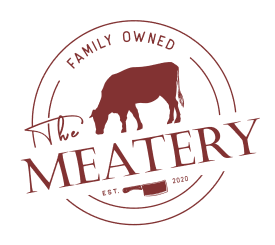Imagine a steak so succulent, its marbled fat melts in your mouth, leaving behind a symphony of rich, buttery flavor. This is the essence of Wagyu beef, a Japanese delicacy revered for its unmatched quality.
But the story of Wagyu goes far beyond a single bite. It's a captivating tale of tradition, meticulous breeding practices, and a cultural shift that transformed Japan's relationship with cattle. Buckle up, food lovers, as we delve into the fascinating history of Wagyu beef in Japan.
From Workhorse to Culinary Icon: The Early Days of Japanese Cattle
The story of Wagyu stretches back millennia. While the exact date remains elusive, evidence suggests cattle arrived in Japan around 200 AD from mainland Asia. These early ancestors of Wagyu were far from the pampered bovines we know today.
Instead, they served a vital role in Japanese society as draft animals, tirelessly assisting farmers in tilling fields and transporting goods. Bred for strength and endurance, these early cattle were smaller than their modern counterparts, with a wider variety of coat colors.
The Meiji Restoration and a Turning Point: Embracing Beef Consumption
For centuries, Japan adhered to a strict Buddhist doctrine that prohibited meat consumption. However, everything changed with the Meiji Restoration in 1868. This period ushered in a wave of modernization, and Western customs, including the consumption of red meat, began to influence Japanese culture. To meet this new demand, the government started looking at its cattle population with a different lens.
Crossbreeding for Excellence: The Birth of Modern Wagyu
Initially, Japan's native cattle breeds weren't ideal for meat production. With this in mind, the government embarked on a strategic crossbreeding program. European breeds like Holstein and Aberdeen Angus were introduced and meticulously mated with the existing Japanese stock. This cross-breeding wasn't a haphazard attempt at increasing size.
It was a scientific and selective process aimed at combining the best traits of each breed. European cattle boasted impressive marbling, a key factor in flavor and tenderness. By strategically incorporating these genes into the local lineage, a new generation of cattle emerged – the foundation of modern Wagyu.
Regional Gems Emerge: The Four Main Wagyu Breeds
The beauty of Wagyu lies in its regional diversity. Over time, distinct breeds developed in different parts of Japan, each reflecting the unique climate, geography, and breeding practices of its region. Here, we take a closer look at the four main Wagyu breeds:
- Japanese Black: This is the most common Wagyu breed and the source of internationally renowned brands like Kobe beef. Known for its intense marbling and buttery flavor, Japanese Black cattle are primarily raised in the Hyogo Prefecture.
- Japanese Brown: This breed is smaller than the Japanese Black and boasts a slightly different flavor profile. Renowned for its balanced marbling and a touch of sweetness, Japanese Brown cattle are primarily found in Kumamoto and Miyazaki Prefectures.
- Japanese Shorthorn: This breed is known for its leaner physique and excellent marbling quality. Offering a unique contrast of lean and rich fat, Japanese Shorthorn cattle are primarily raised in the Tottori Prefecture.
- Japanese Polled: This breed is the least common amongst the four. Known for its fine marbling and a hint of gaminess, Japanese Polled cattle are primarily found in the Kagoshima Prefecture.
Beyond Genetics: The Art of Wagyu Raising
The story of Wagyu is much more than just genetics. Japanese Wagyu farmers are meticulous in their approach, raising their cattle with the utmost care. Traditional methods like beer massage (thought to promote marbling) and feeding cattle nutrient-rich rice straw contribute to the superior quality of Wagyu.
Furthermore, strict regulations and a rigorous grading system ensure only the very best Wagyu reaches the market.
The meticulous care given to Wagyu extends beyond feeding and massage. Wagyu cattle are often raised in smaller herds, allowing for individual attention and a less stressful environment.
This stress-free upbringing is believed to contribute to the tenderness and flavor of the meat. Additionally, the specific diet of Wagyu plays a crucial role. The aforementioned rice straw, rich in fiber and nutrients, is supplemented with other carefully selected feed to promote optimal fat marbling.
The Wagyu Experience: A Fusion of Flavor and Culture
Today, Wagyu has transcended from a simple dish to a culinary experience. The intricate marbling delivers a melt-in-your-mouth texture, while the subtle sweetness and umami flavors create an explosion in the palate.
Enjoying Wagyu is about savoring the dedication of generations of breeders, the meticulous care of farmers, and the rich cultural heritage embedded in every bite.
Wagyu Grading: A System of Excellence
To ensure the highest quality Wagyu reaches consumers, Japan has implemented a rigorous grading system.
The most widely recognized system is the Meat Grading Association of Japan (MGAP) standard, which evaluates beef based on factors like marbling, meat color, brightness, firmness, and texture. The highest grade, A5, is reserved for beef with exceptional marbling and other quality attributes.
The Wagyu grading system is a testament to Japan's commitment to excellence. It provides consumers with a reliable way to assess the quality of Wagyu beef and guarantees that they are purchasing a product that meets the highest standards.
Exploring Wagyu Beyond the Plate: Themeatery.com - Your Gateway to Authentic Japanese Cuisine
Have you ever wondered how Wagyu beef became the culinary sensation it is today? Let's take a journey back in time to uncover the rich history and meticulous craftsmanship that make this Japanese delicacy truly extraordinary.
From humble beginnings as working animals, Japanese cattle have evolved into the prized possessions they are today. Through centuries of careful breeding and nurturing, Wagyu has developed its signature marbling and unparalleled tenderness.
At The Meatery, we're passionate about bringing you the finest Wagyu experience. Our carefully curated selection showcases the very best this culinary treasure has to offer. From the exquisite A5 Kobe beef to the rich flavors of Miyazaki Wagyu, we have something to tantalize every palate.









